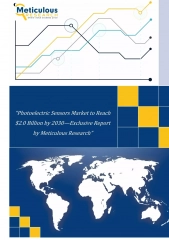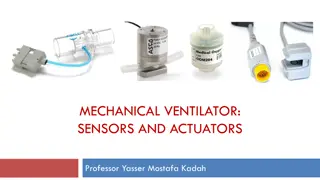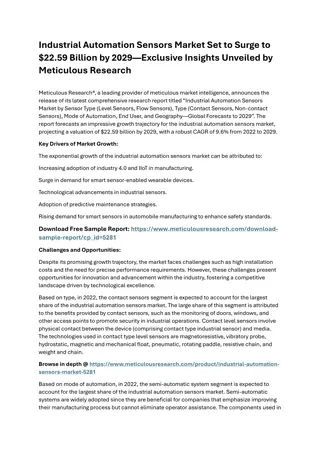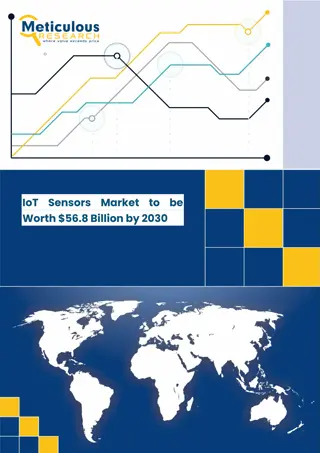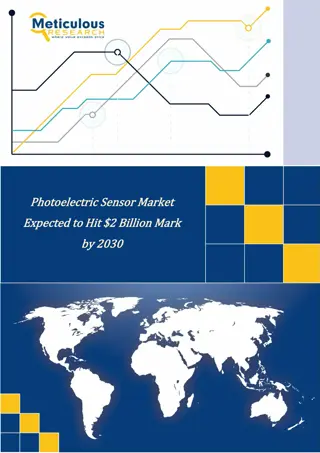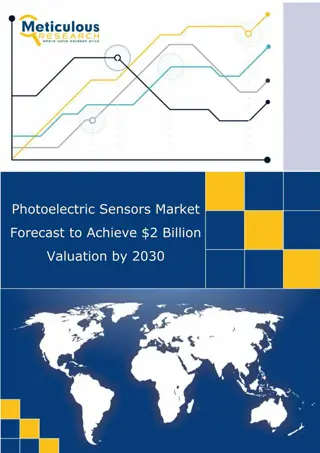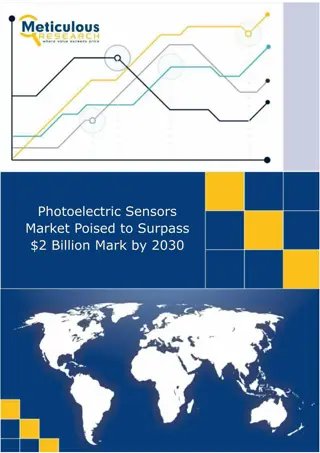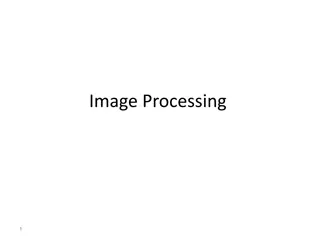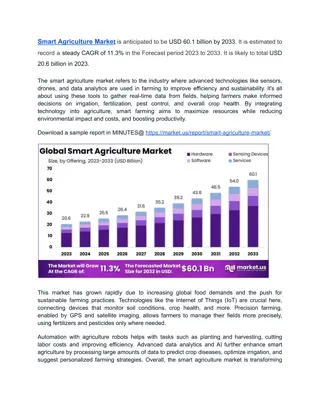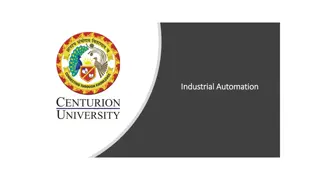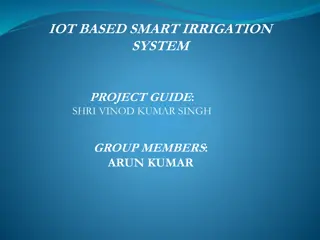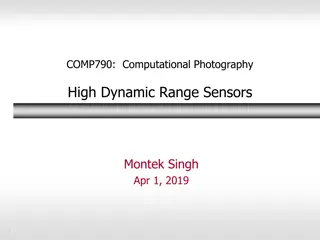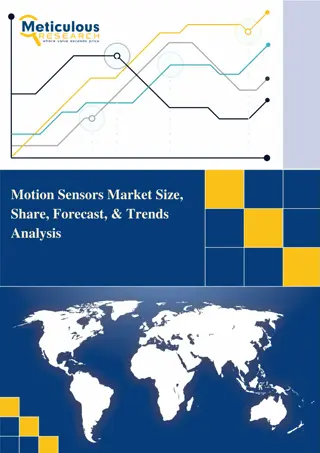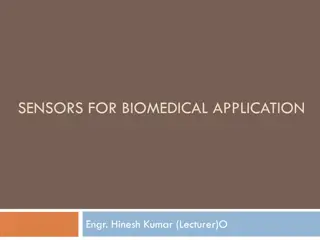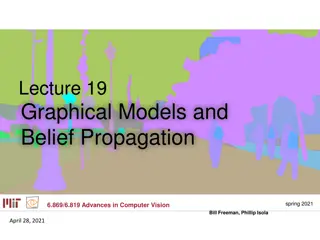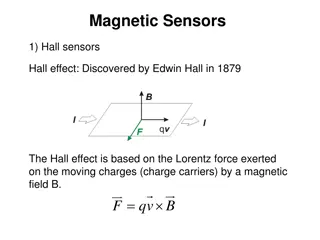ShiDianNao: Advancing Vision Processing Closer to Sensors
Neural network accelerators are achieving high energy efficiency and performance for recognition and mining applications. To overcome memory bandwidth constraints, the proposal suggests mapping the entire CNN into SRAM and moving closer to sensors to minimize memory access for I/O. Placing the CNN accelerator next to a CMOS or CCD sensor, avoiding DRAM accesses, and exploiting access patterns have led to a substantial 60x increase in energy efficiency. Synthesis at 65 nm has shown significant speedup over CPUs, GPUs, and DianNao.
Download Presentation

Please find below an Image/Link to download the presentation.
The content on the website is provided AS IS for your information and personal use only. It may not be sold, licensed, or shared on other websites without obtaining consent from the author. Download presentation by click this link. If you encounter any issues during the download, it is possible that the publisher has removed the file from their server.
E N D
Presentation Transcript
1 ShiDianNao: Shifting Vision Processing Closer to the Sensor Authors Zidong Du et al. Presented by Gokul Subramanian Ravi November 12, 2015 11/12/15 ShiDianNao: Shifting Vision Processing Closer to the Sensor
Summary 2 Fact: Neural network accelerators achieve high energy efficiency/performance for recognition and mining applications. Problem: Further improvements limited by memory bandwidth constraints. Proposal: Mapping entire CNN into SRAM: Memory accesses for weights. Moving closer to sensors: Memory access for I/O. Result: CNN accelerator placed next to a CMOS or CCD sensor. Absence of DRAM accesses + exploitation of access patterns: 60x energy efficiency. Synthesis at 65 nm: Large speedup over CPUs/GPUs/DianNao. 11/12/15 ShiDianNao: Shifting Vision Processing Closer to the Sensor
Outline 3 Overview of Neural Networks Memory Constrained Acceleration Primer on CNNs Mapping Principles Accelerator Architecture Computation Storage Control CNN Mapping Results Conclusion 11/12/15 ShiDianNao: Shifting Vision Processing Closer to the Sensor
Overview of Neural Networks 4 Feed forward networks trained by trial/error or back-propagation. Machine learning implemented in FPGAs/accelerators provide high performance/efficiency in multiple applications. Convergence of trends towards recognition and mining applications, neural network based algorithms can tackle a significant share of these applications. Best of both worlds: accelerators with high performance/efficiency and yet broad application scope. Two types of NN C(Convolutional)NN and D(Deep)NN. 11/12/15 ShiDianNao: Shifting Vision Processing Closer to the Sensor
CNN vs. DNN 5 Deep Neural Networks: Used in object detection, parsing, language modeling. Each neuron has unique weight Sizes ranging up to 10 billion neurons Convolutional Neural Networks: Used in computer vision, recognition etc. Each neuron shares its weight with other neurons. Sizes are smaller (eg. 60 million weights). Due to its small weights memory footprint, it is possible to store a whole CNN within a small SRAM next to computational operators No longer a need for DRAM memory accesses to fetch the (weights) in order to process each input. 11/12/15 ShiDianNao: Shifting Vision Processing Closer to the Sensor
Memory Constrained Acceleration 6 Highest energy expense is related to data movement, in particular DRAM accesses rather than computation. DRAM accesses fetch weights and inputs. The image is acquired by the CMOS/CCD sensor, sent to DRAM, and later fetched by the CPU/GPU for recognition processing. The small size of the CNN accelerator makes it possible to hoist it next to the sensor, and only send the few output bytes of the recognition process to DRAM or the host processor. 11/12/15 ShiDianNao: Shifting Vision Processing Closer to the Sensor
Shi + DianNao = ShiDianNao 7 A synthesized (place & route) accelerator design for large-scale CNNs and DNNs. Achieves high throughput in a small area, power and energy footprint. Exploits the locality properties of processing layers introduces custom designed storage structures reducing memory overhead. ShiDianNao builds atop this to almost completely eliminate DRAM accesses. * DianNao: A Small-Footprint High-Throughput Accelerator for Ubiquitous Machine-Learning 11/12/15 ShiDianNao: Shifting Vision Processing Closer to the Sensor
Convolutional Neural Networks 8 Input: 2D arrays of input pixels/neurons Convolution Layer: Set of local filters designed for identifying characteristics of input feature maps. Processes a convolutional window capturing Kx Ky input neurons in one input feature map. A 2D array of local filters produces an output feature map, where each local filter corresponds to an output neuron. 11/12/15 ShiDianNao: Shifting Vision Processing Closer to the Sensor
Convolutional Neural Networks 9 Pooling Layer: Down-samples an input feature map by performing maximum or average operations to non-overlapping windows of input neurons. Normalization Layer: 2 Types: LRN and LCN. Improves the recognition accuracy of CNN. Classifier Layer: integrates one or more classifier layers to compute the final result. 11/12/15 ShiDianNao: Shifting Vision Processing Closer to the Sensor
Code Snippets 10 * DianNao: A Small-Footprint High-Throughput Accelerator for Ubiquitous Machine-Learning 11/12/15 ShiDianNao: Shifting Vision Processing Closer to the Sensor
Mapping Principles 11 Processing elements represent neurons, are organized in a 2D mesh, receive broadcasted kernel elements, receive through right-left and up-down shifts the input feature map accumulate locally the resulting output feature map. Temporal sharing / Sequential mapping. 11/12/15 ShiDianNao: Shifting Vision Processing Closer to the Sensor
Architecture: Computation 12 Two buffers for input and output neurons (NBin and NBout), buffer for synapses (SB) A neural functional unit (NFU) plus an arithmetic unit (ALU) for computing output neurons 16-bit operations. 11/12/15 ShiDianNao: Shifting Vision Processing Closer to the Sensor
Architecture: Computation 13 NFU optimized into 2D to handle 2D data as used in convolution. Intuitive way of mapping is to map Kx*Ky kernel to same number of PEs to output one neuron disadvantageous. Single PE/output neuron, time shared across input neurons (increased latency?). PE can perform addition, multiplication or comparison. Lightweight ALU to implement non-linear activation function (in the form of piecewise linear interpolation). 11/12/15 ShiDianNao: Shifting Vision Processing Closer to the Sensor
Inter-PE data propagation 14 Required data available in NBin/NBout but repeatedly reading them requires high b/w. Inter-PE data propagation allows efficient data reuse. Temporarily store outputs and transfer to left and lower neighbors. 11/12/15 ShiDianNao: Shifting Vision Processing Closer to the Sensor
Architecture: Storage 15 On-chip SRAM to store data/instructions. ~136 KB storage sufficient for total data of practical CNNs. Implements 288KB SRAM. 11/12/15 ShiDianNao: Shifting Vision Processing Closer to the Sensor
Architecture: Control 16 Support efficient computation and data reuse. NB 2*Py banks, each with width Px*2 bytes. 11/12/15 ShiDianNao: Shifting Vision Processing Closer to the Sensor
Read modes 17 11/12/15 ShiDianNao: Shifting Vision Processing Closer to the Sensor
Hierarchical control FSM 18 2 level hierarchical FSM to describe execution flow. Level 1: ALU task / layer type etc. Level 2: Within-layer execution steps. 11/12/15 ShiDianNao: Shifting Vision Processing Closer to the Sensor
Mapping Conv. Layer to design 19 11/12/15 ShiDianNao: Shifting Vision Processing Closer to the Sensor
Results: Parameters/overheads 20 11/12/15 ShiDianNao: Shifting Vision Processing Closer to the Sensor
Results: Performance 21 11/12/15 ShiDianNao: Shifting Vision Processing Closer to the Sensor
Results: Energy 22 11/12/15 ShiDianNao: Shifting Vision Processing Closer to the Sensor
Conclusions 23 Versatile accelerator for visual recognition algorithms. 50x, 30x, 1.8x faster than CPU, GPU and DianNao. 4700x and 60x less energy than GPU and DianNao. Only 3x the area of DianNao. 320 mW at 1GHz. 11/12/15 ShiDianNao: Shifting Vision Processing Closer to the Sensor
Questions 24 11/12/15 ShiDianNao: Shifting Vision Processing Closer to the Sensor















